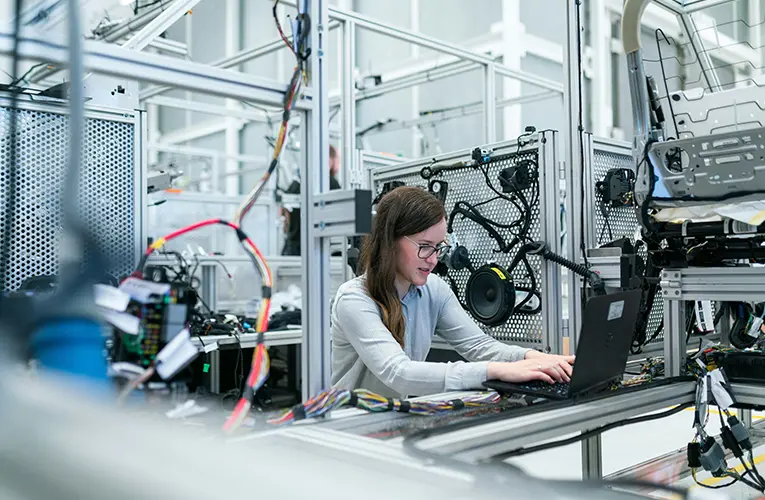“Tech for Good: Innovative Solutions to Global Challenges”
Exploring “Tech for Good: Innovative Solutions to Global Challenges” involves examining how technology can address and solve pressing global issues. This comprehensive guide will delve into various innovative technological solutions that are making a positive impact across different sectors. Here’s a detailed outline and overview for a thorough exploration of these solutions:
### Outline:
1. **Introduction**
– Definition of “Tech for Good”
– Overview of global challenges addressed by technology
– Importance of innovative solutions for sustainable development
2. **Technology and Climate Change**
– **Renewable Energy Solutions:**
– Innovations in solar, wind, and hydro power
– Advances in energy storage and smart grids
– **Climate Monitoring and Data Analytics:**
– Use of satellites and IoT for climate monitoring
– Big data analytics for climate predictions and policy-making
– **Carbon Capture and Sustainability:**
– Technologies for carbon capture and storage
– Sustainable practices in agriculture and industry
3. **Healthcare and Medicine**
– **Telemedicine and Remote Health Services:**
– Expansion of telemedicine platforms and their impact
– Remote diagnostics and monitoring technologies
– **AI and Machine Learning in Healthcare:**
– Applications in disease prediction and personalized medicine
– Innovations in medical imaging and diagnostics
– **Biotechnology and Genomics:**
– Advances in CRISPR and gene editing
– Innovations in drug development and regenerative medicine
4. **Education and Access to Information**
– **EdTech Innovations:**
– Online learning platforms and digital classrooms
– Gamification and interactive learning tools
– **Access to Information:**
– Technologies bridging the digital divide
– Initiatives to provide internet access in underserved regions
– **Lifelong Learning and Skills Development:**
– Platforms for continuous education and skills training
– Role of AI and VR in enhancing learning experiences
5. **Food Security and Agriculture**
– **Precision Agriculture:**
– Use of drones and sensors for crop monitoring
– Data-driven approaches to optimize farming practices
– **Sustainable Food Production:**
– Innovations in plant-based and lab-grown meats
– Technologies for reducing food waste and improving supply chains
– **Aquaculture and Water Management:**
– Advances in sustainable aquaculture practices
– Technologies for efficient water use and management
6. **Economic Development and Financial Inclusion**
– **Fintech Solutions:**
– Mobile banking and digital payment systems
– Blockchain technology for financial transparency and inclusion
– **Entrepreneurship and Innovation Hubs:**
– Role of tech incubators and accelerators in fostering startups
– Impact of digital tools on small and medium-sized enterprises (SMEs)
– **Economic Empowerment:**
– Platforms supporting microloans and crowdfunding
– Digital skills training for economic opportunities
7. **Disaster Response and Humanitarian Aid**
– **Emergency Response Technologies:**
– Use of drones and GIS for disaster assessment and response
– Mobile apps for coordinating aid and resources
– **Humanitarian Logistics:**
– Technologies improving the efficiency of aid distribution
– Innovations in tracking and managing relief supplies
– **Community Resilience:**
– Tech solutions for building community resilience and preparedness
– Platforms for disaster education and awareness
8. **Social Justice and Human Rights**
– **Tech for Social Justice:**
– Platforms for advocacy and awareness campaigns
– Use of data and technology to monitor human rights abuses
– **Inclusive Technologies:**
– Innovations supporting people with disabilities
– Technologies promoting gender equality and social inclusion
– **Ethical AI and Responsible Tech:**
– Ensuring fairness and transparency in AI systems
– Initiatives for responsible tech development and deployment
9. **Case Studies and Success Stories**
– **Real-Life Examples:**
– Detailed case studies of successful tech for good initiatives
– Impact assessments and lessons learned from these examples
– **Innovative Projects and Startups:**
– Profiles of startups and projects leading in tech for good
10. **Conclusion**
– Summary of key technological solutions for global challenges
– Reflection on the potential of tech for good to drive positive change
– Call to action for continued innovation and collaboration
—
### Detailed Overview:
#### **Introduction**
Begin by defining what is meant by “Tech for Good” and explaining why addressing global challenges with technology is crucial. Provide an overview of some of the major global issues that technology can help solve, setting the stage for a detailed exploration of innovative solutions.
#### **Technology and Climate Change**
– **Renewable Energy Solutions:**
– **Solar, Wind, and Hydro Power:** Discuss the latest advancements in renewable energy technologies, including improved efficiency and cost-effectiveness of solar panels, wind turbines, and hydroelectric systems.
– **Energy Storage and Smart Grids:** Explore innovations in battery storage solutions and smart grid technologies that enhance energy distribution and reliability.
– **Climate Monitoring and Data Analytics:**
– **Satellites and IoT:** Explain how satellites and Internet of Things (IoT) devices are used for real-time climate monitoring and data collection.
– **Big Data Analytics:** Describe how big data is used to analyze climate patterns, predict changes, and inform policy decisions.
– **Carbon Capture and Sustainability:**
– **Carbon Capture Technologies:** Review technologies designed to capture and store carbon emissions from industrial processes and power plants.
– **Sustainable Practices:** Discuss advancements in sustainable agriculture, including precision farming and eco-friendly practices.
#### **Healthcare and Medicine**
– **Telemedicine and Remote Health Services:**
– **Telemedicine Platforms:** Highlight the growth of telemedicine services and their impact on accessibility and healthcare delivery.
– **Remote Diagnostics:** Describe technologies that enable remote diagnostics and patient monitoring, improving healthcare access in underserved areas.
– **AI and Machine Learning:**
– **Disease Prediction and Personalized Medicine:** Explore how AI and machine learning are used to predict disease outbreaks, personalize treatment plans, and improve patient outcomes.
– **Medical Imaging Innovations:** Discuss advancements in medical imaging technologies, such as AI-powered diagnostic tools.
– **Biotechnology and Genomics:**
– **CRISPR and Gene Editing:** Explain the implications of CRISPR and other gene-editing technologies for medicine and genetics.
– **Drug Development:** Review innovations in drug discovery and development, including accelerated research processes and personalized medicine approaches.
#### **Education and Access to Information**
– **EdTech Innovations:**
– **Online Learning Platforms:** Explore the rise of online education platforms and their role in expanding access to education.
– **Gamification:** Discuss the use of gamification and interactive tools to enhance learning experiences.
– **Access to Information:**
– **Bridging the Digital Divide:** Describe technologies and initiatives aimed at improving internet access in underserved regions.
– **Internet Access Projects:** Highlight projects that provide internet connectivity to remote and impoverished areas.
– **Lifelong Learning:**
– **Continuous Education Platforms:** Examine platforms that offer ongoing education and skills development opportunities.
– **AI and VR in Learning:** Explore how artificial intelligence and virtual reality are used to create immersive and effective learning experiences.
#### **Food Security and Agriculture**
– **Precision Agriculture:**
– **Drones and Sensors:** Discuss the use of drones and sensors in precision agriculture for crop monitoring and management.
– **Data-Driven Farming:** Review data-driven approaches to optimize farming practices and improve yields.
– **Sustainable Food Production:**
– **Plant-Based and Lab-Grown Meats:** Explore innovations in alternative proteins and sustainable food production technologies.
– **Reducing Food Waste:** Discuss technologies and practices aimed at minimizing food waste and improving supply chain efficiency.
– **Aquaculture and Water Management:**
– **Sustainable Aquaculture:** Highlight advances in sustainable aquaculture practices and their impact on food security.
– **Efficient Water Use:** Examine technologies for efficient water management and irrigation in agriculture.
#### **Economic Development and Financial Inclusion**
– **Fintech Solutions:**
– **Mobile Banking:** Review the impact of mobile banking and digital payment systems on financial inclusion.
– **Blockchain Technology:** Discuss the role of blockchain in enhancing financial transparency and security.
– **Entrepreneurship and Innovation Hubs:**
– **Tech Incubators:** Explore the role of tech incubators and accelerators in fostering innovation and supporting startups.
– **Impact on SMEs:** Discuss how digital tools and platforms benefit small and medium-sized enterprises.
– **Economic Empowerment:**
– **Microloans and Crowdfunding:** Highlight platforms that provide microloans and crowdfunding opportunities to entrepreneurs and communities.
– **Digital Skills Training:** Review initiatives focused on digital skills development and economic empowerment.
#### **Disaster Response and Humanitarian Aid**
– **Emergency Response Technologies:**
– **Drones and GIS:** Discuss the use of drones and geographic information systems (GIS) in disaster response and management.
– **Mobile Apps for Aid:** Review mobile applications that facilitate coordination and distribution of humanitarian aid.
– **Humanitarian Logistics:**
– **Efficient Aid Distribution:** Explore technologies that improve the efficiency and effectiveness of aid distribution during emergencies.
– **Tracking Relief Supplies:** Highlight innovations in tracking and managing relief supplies to ensure timely delivery.
– **Community Resilience:**
– **Building Resilience:** Discuss tech solutions designed to enhance community resilience and preparedness for disasters.
– **Disaster Education Platforms:** Explore platforms that provide disaster education and awareness to communities at risk.
#### **Social Justice and Human Rights**
– **Tech for Social Justice:**
– **Advocacy Platforms:** Examine how technology is used to support social justice causes and raise awareness about human rights issues.
– **Monitoring Human Rights Abuses:** Discuss the use of technology for monitoring and documenting human rights abuses.
– **Inclusive Technologies:









